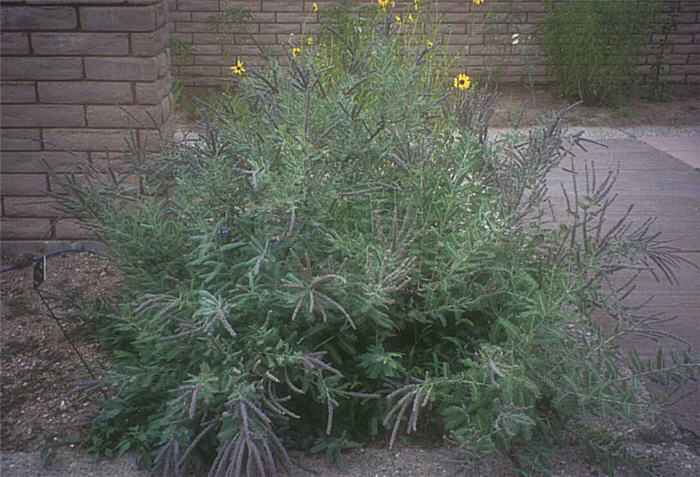| Botanical Name: Amorpha canescens | |
| Common Name: Leadplant |

-
Anatomy
-
Culture
-
Design
Plant Type
Shrub
Height Range
1-3'
Flower Color
Purple
Flower Season
Summer
Leaf Color
Grey Green
Bark Color
Tan, White
Fruit Color
n/a
Fruit Season
n/a
Sun
Full
Water
Very Low, Low
Growth Rate
Moderate
Soil Type
Sandy, Clay, Rocky
Soil Condition
Average, Poor, Well-drained, Dry
Soil pH
Neutral, Basic
Adverse Factors
n/a
Design Styles
Meadow, Ranch, Spanish
Accenting Features
Showy Flowers
Seasonal Interest
Summer
Location Uses
Perennial Border, Shrub Border, Foundation, Walls / Fences
Special Uses
Cut Flowers, Naturalizing, Small Spaces
Attracts Wildlife
Butterflies
Information by: Stephanie Duer
Photographer:
Photographer:
-
Description
-
Notes
Leadplant is a showy, small shrub that grows 2 to 3 feet tall and wide, with an upright to rounded form. Foliage is long, compounded and needle-like, and greyish-green. New wood is densely hairy and whitish. Thin spikes of pea-like flowers occur July to September, and are violet-blue with orange eyes. Provides substance to the sunny perennial border or meadow garden. Attracts bees and butterflies. Grows about 2 to 4 feet tall and 3 to 4 feet wide.
Grow in full sun and well-drained soil. Does well in poor, sandy, somewhat dry soils. Leadplant is a deep-rooted perennial that nitrifies the soil. It grows in a wide range of soil conditions, but avoid wet clays and very dry, sandy soils. Moderately xeric, a deep soaking every couple of weeks is recommended for established plants. An annual late-fall pruning back to a foot tall will increase the flowers. Not adapted to low-desert heat. USDA Zones 4-8. May spread by self-seeding.